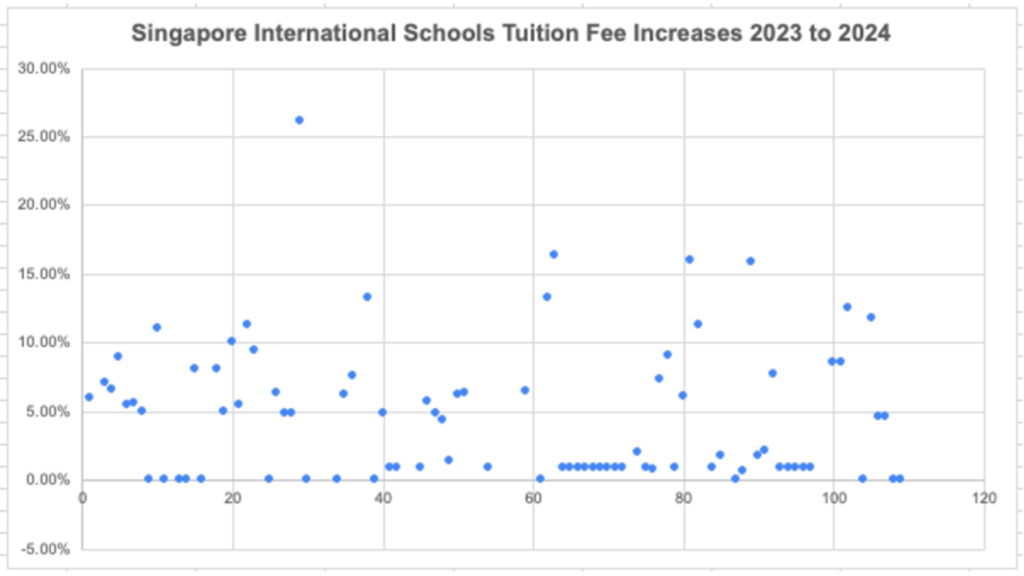Renowned for its world-class education system, Singapore continues to attract expatriates seeking quality education for their children. However, one of the key considerations for parents is the Singapore International School Pricing. As we delve into a comparison of school pricing in 2024 to the previous year, it is evident that the landscape has undergone notable shifts.
In 2023, tuition fees across international schools in Singapore were already significant, indicative of the high standards and facilities that these institutions offer. We find that most schools have raised their fees further in 2024, some in line with expectation, and others witnessing more substantial increases.
The average tuition fee rise across international schools in Singapore from 2023 to 2024 hovers around 4.13%. This increment is somewhat higher than the general inflation rate of between 2.5 to 3.5% currently expected for 2024, which reflects the ongoing efforts of schools to improve their offerings and maintain their standards.
Apart from an outlier (one school posted a 26% increase in tuition fees from 2023 to 2024), the upper range of tuition fee increases was between 11 and 16%. This uptick may be attributed to infrastructure enhancements, curriculum enrichment, or other factors contributing to the schools’ value propositions and likely reflects the schools’ continued investment in academic programs and campus facilities to maintain their competitive edge.
Amidst the flux, a handful of institutions opted to maintain their tuition fees at 2023 levels, recognising the financial strains families may face amidst global uncertainties. Such a decision not only fosters loyalty among existing families but also makes the institution more appealing to prospective parents seeking predictability in expenses.
Several factors contribute to the pricing dynamics observed in 2024. These include:
- Demand-Supply Dynamics: With a steady influx of expatriates, the demand for international schooling remains robust. Schools adjust their fees in response to demand and to cover the costs of expansion or improvement.
- Investments in Quality: Schools continually invest in upgrading facilities, hiring qualified staff, and enhancing academic programs to remain competitive. These investments often translate into higher tuition fees.
- Inflation and Operational Costs: Like any other business, international schools face inflationary pressures and escalating operational costs, necessitating periodic adjustments in fees to ensure financial sustainability.
Navigating the realm of international school pricing in Singapore demands careful consideration of various factors, including individual school offerings, fee structures, and long-term educational goals. While fee increases are inevitable, they underscore the commitment of schools to provide a world-class educational experience. Moreover, amidst the fluctuating landscape, schools that prioritise stability and affordability stand out as beacons of reliability and inclusivity in the educational ecosystem of Singapore






